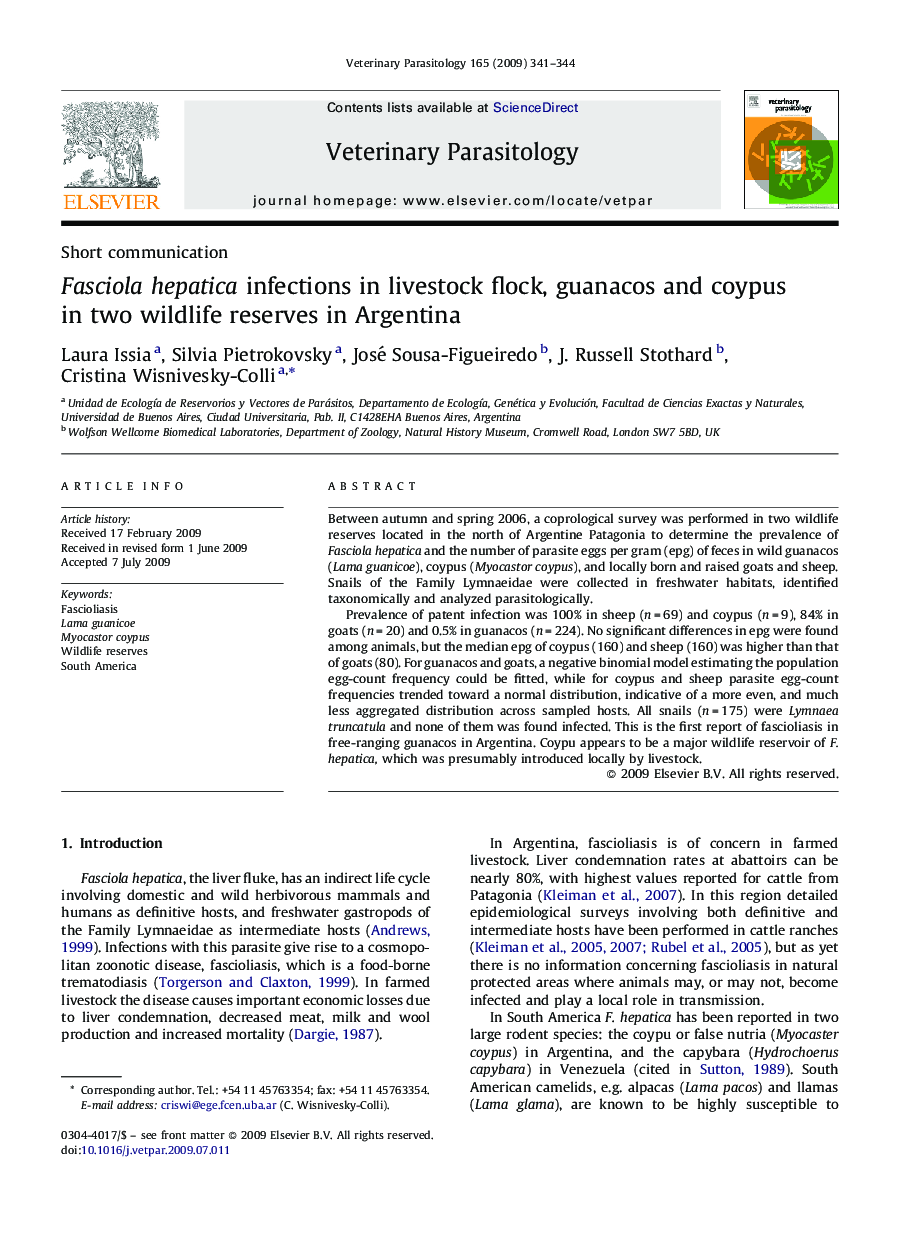| کد مقاله | کد نشریه | سال انتشار | مقاله انگلیسی | نسخه تمام متن |
|---|---|---|---|---|
| 2470765 | 1555749 | 2009 | 4 صفحه PDF | دانلود رایگان |

Between autumn and spring 2006, a coprological survey was performed in two wildlife reserves located in the north of Argentine Patagonia to determine the prevalence of Fasciola hepatica and the number of parasite eggs per gram (epg) of feces in wild guanacos (Lama guanicoe), coypus (Myocastor coypus), and locally born and raised goats and sheep. Snails of the Family Lymnaeidae were collected in freshwater habitats, identified taxonomically and analyzed parasitologically.Prevalence of patent infection was 100% in sheep (n = 69) and coypus (n = 9), 84% in goats (n = 20) and 0.5% in guanacos (n = 224). No significant differences in epg were found among animals, but the median epg of coypus (160) and sheep (160) was higher than that of goats (80). For guanacos and goats, a negative binomial model estimating the population egg-count frequency could be fitted, while for coypus and sheep parasite egg-count frequencies trended toward a normal distribution, indicative of a more even, and much less aggregated distribution across sampled hosts. All snails (n = 175) were Lymnaea truncatula and none of them was found infected. This is the first report of fascioliasis in free-ranging guanacos in Argentina. Coypu appears to be a major wildlife reservoir of F. hepatica, which was presumably introduced locally by livestock.
Journal: Veterinary Parasitology - Volume 165, Issues 3–4, 12 November 2009, Pages 341–344